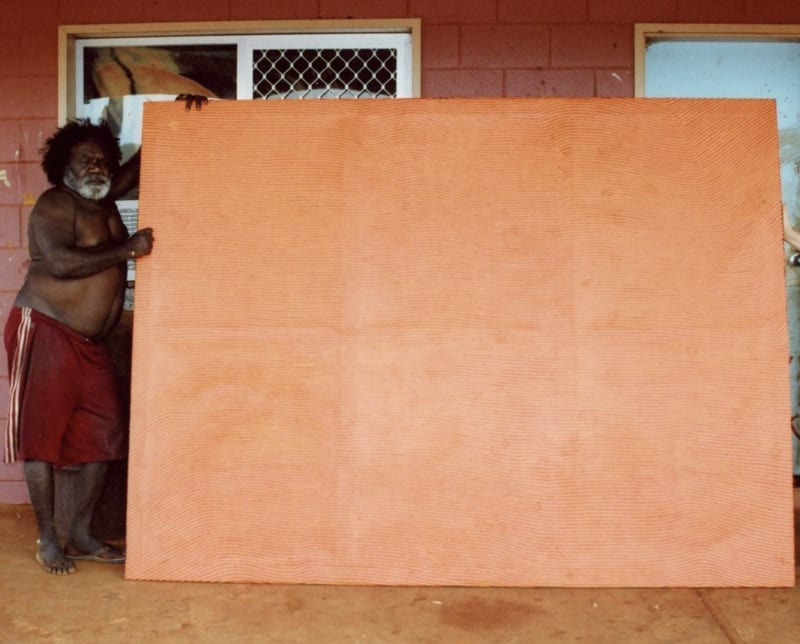George Tjungurrayi Pintupi language, Circa 1943-1947
“When we paint, we don’t just paint trivial things. What we are painting are our family legacies. What belongs to us from our fathers, the country and our Dreaming story from our fathers. What belongs to us. We all do this. We all do this in the right way.” –George Tjungurrayi
Born in the desert near Kiwirrkurra, George is the son of Natiki Kuli Tjapaltjarri and Witardia Nakamarra. George’s home site is Tjulyantjangka, and he paints Tingarri stories of this reign in the classic Pintupi style of dotted grids and minimalistic lines. George travelled in from the desert, by way of Mt Doreen Station and Yuendumu. He travelled back west in 1962, acting as a guide for a Welfare Branch Patrol, finding his family who were still in the bush. His career as a painter began in West Camp Papunya in April 1976 and continued during the 1970s as he moved between Papunya, Yayayi, Waruwiya, and Mt Liebig. George settled in Kintore in the early 1980s, and his painting style changed, creating topographical lines in a minimalist style that became increasingly popular among contemporary art collectors. By the end of the 1990s, George Tjungurrayi was one of the most sought-after Papunya Tula painters, and his career as an artist is followed by his son Jack Tjapaltjarri, who began painting in 2004 under his father’s instruction. In 2018, his work was featured in the 21st Biennale of Sydney.
—Fred Myers and Henry Skerritt in Irrititja Kuwarri Tjungu: Past & Present Together: 50 Years of Papunya Tula Artists, Kluge-Ruhe Aboriginal Art Collection of the University of Virginia


